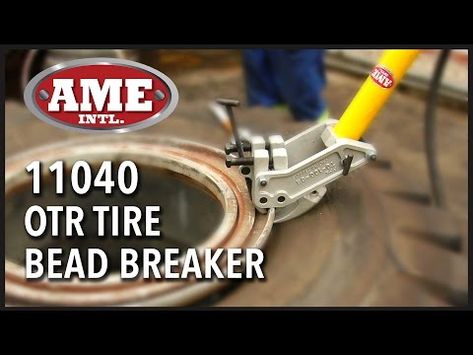Tire tech 101
Home → HOW TO CHANGE TIRES
‘Break’ the tire bead loose with a Bead Breaker
Remove the Tire with Tire IronsThe BeadBuster tool only helps with the 1st step.
MORE INFO AND DEFINITIONS OF TIRE & WHEEL FEATURES


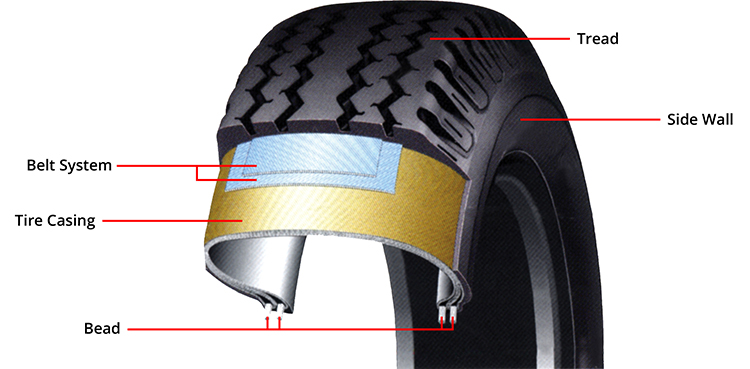 By design, the BeadBuster HAS to work…and it does every time.
By design, the BeadBuster HAS to work…and it does every time.Content copyright 2020. BeadBuster LLC. All rights reserved.
Getting trash and rubbish inside tires happens quite a lot, especially with vehicle owners having many off-road trips. To be more specific, the trash will make its way onto and into the tire. And this is the reason why we need to break a tire bead.
Tire bead is the innermost diameter of the tire that connects with the wheel rim. Most people think that breaking a tire bead is common knowledge for every driver. However, not that many car owners know how to break a tire bead. As long as the bead stays intact, there is no gap to form between the rim and the outer edge of the tire. Basically, there is no way to fix the tire from the inside, which is another reason to learn
how to break a tire bead. In this article, our car experts will tell you what tool you need to break the tire, as well as how to do it.
However, not that many car owners know how to break a tire bead. As long as the bead stays intact, there is no gap to form between the rim and the outer edge of the tire. Basically, there is no way to fix the tire from the inside, which is another reason to learn
how to break a tire bead. In this article, our car experts will tell you what tool you need to break the tire, as well as how to do it.
Before getting to know how to break a tire bead, it is essential to acknowledge your best tool. Bead breaker is the car tool with the purpose of separating tires from their rims. Different types of bead breakers have different ways of using. So let’s jump right into answering the question “how to break a bead on a tire“:
Plier Type MechanismThis bead breaker uses a plier-type tool in order to apply force between the bead and the rim’s lip. The tool has a spike to perform this task. To be more precise, this spike imposes a force on the bead and the sidewall of the tire to separate them. Therefore, it weakens and removes their connection. This plier type mechanism is amazingly effective and can get the job done very fast. However, it has its disadvantages. The spike is like a double-edge knife that might leave scratches on the surface and on the wheels themselves. Not to mention, this plier type mechanism is very heavy and big, which requires your full body weight in order to get the results.
Therefore, it weakens and removes their connection. This plier type mechanism is amazingly effective and can get the job done very fast. However, it has its disadvantages. The spike is like a double-edge knife that might leave scratches on the surface and on the wheels themselves. Not to mention, this plier type mechanism is very heavy and big, which requires your full body weight in order to get the results.
Just like the name said, the shoe and lever mechanism has a shoe-shaped tool which can apply pressure on the sidewall of the tire. In order to break the connection between the bead and the rim, car owners must push the sidewall. This is, without a doubt, the most popular bead breaker among all, since it works amazingly well on motorcycle tires, new passenger vehicle tires, as well as trailers’ tires. The benefits of this bead breakers are quite a lot: First of all, it is very low cost, so anyone can purchase one for their vehicle. Second of all, the way to use it is quite simple and easy to follow. Last of all, it is made for passenger cars’ tires.
Last of all, it is made for passenger cars’ tires.
On the other hand, it does not work very well with old and hard-to-change tires. Since the shoe and lever mechanism is also large and bulky, this breaker can only be used on some particular types of tires.
Clamp and Ram MechanismLast but not least, the quickest and most efficient break beads of all time: Clamp and Ram Mechanism. If the first two mechanisms cannot solve the problem with difficult-to-replace tires, this bead breaker can deal with all of them. In order to make it work, this machine uses a pointed foot tool with the purpose of exploiting the space between the bead and the rim’s lip. Not to mention, this bead breaker also has a padded clamp. The part can go inside the sidewall with little effort. Long story short, not only this machine works with all types of tires with minimal human effort, it also causes no harm to the sidewall or to the tires.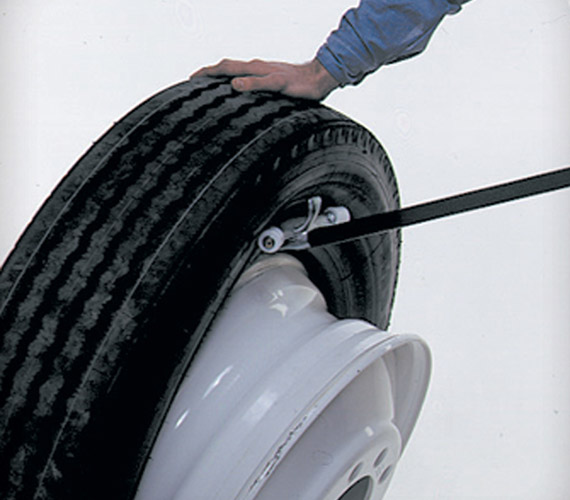 However, it is quite costly.
However, it is quite costly.
Knowing that you are already familiar with all the tools, let’s answer the question of “How to break a Tire Bead?”. In order to perform this task, car owners need to follow these steps:
Step 1: Prepare the ToolNo warrior goes barehand into the war. Here is the tool list that you need:
In order to start breaking tire bead, car owners need to be taken off the valve core to release air pressure out. This step needs to perform before and during the first stages.
Removing the core is the essential step in “how to break a tire bead” lesson (Photo Source: brilliantdiy)When the valve core is removed, car owners need to put the wheel under the brace. By performing this, the air will be pushed out and we can easily take the wheel off the rim. Just remember to wait until all the air pressure is lost in order to remove the wheel. A little tip to check the tire is to press your hands against the tire’s surface.
Just remember to wait until all the air pressure is lost in order to remove the wheel. A little tip to check the tire is to press your hands against the tire’s surface.
In this step, car owners need to lay the tire on a hard surface. After that, you should position the breaker bar between the rim and tire. Before proceeding to the following step, it is suggested to check if the tapered edge of the breaker bar is aimed toward the tire, not the rim.
Also, a solid surface is the necessary factor in this step, since it is capable of handling the pressure you are going to apply on.
SEE MORE
Inner Tire Wear: Causes And Fixes
Must Have Tools For Garage: A Comprehensive List
The next step of “How to break a tire bead” is to slide the breaker bar between the rim and the tire. It is essential to check if the pointed edge of the breaker bar points away from the tire’s rim. The reason for this is that the edge is highly sharp and might create scratches inside. For that reason, car owners might want to aim the bar to the tire, not the rim.
The reason for this is that the edge is highly sharp and might create scratches inside. For that reason, car owners might want to aim the bar to the tire, not the rim.
When the breaker is already steadying in the distance between the rim and the tire, it is time to hit it with a hammer with the purpose of breaking tire bead. Wait, we are not telling you to destroy the tire! The purpose of doing this is to drive the breaker inside. So keep hitting it and pushing the breaker bar toward the ground until the bead is broken and we can tell by a small pop sound.
Just take time with this, breaking a tire bead is no joke (Photo Source: bendpak)Step 6: Rotate Around the Tire’s InsideLast step of how to break a tire bead is to remove the tire of the rim. Car owners are recommended to rotate the breaker around the tire’s inside while continuing hammering from above. Keep doing that until the tire is off the rim, then turn around and do the same with the opposite side of the tire.
Many people might be wondering, why do drivers need to learn how to break a tire bead? One of the reasons is that the process is simple to follow, even with beginning car owners. All drivers need is thirty minutes and this instruction. Another reason that it provides a great help in cleaning up debris and dirt inside the tire. By breaking the bead, vehicle owners can remove the rubbish inside and reduce the future problems. The last reason is to save the cost of paying a car repairman, since you can remove the tire from its rim by yourself.
Not all wheel disc “injuries” can be repaired. Often it is better to replace a failed disc than to wait until it ruins a tire or suspension. One way or another, seasonal change of shoes is the best reason to solve problems with discs at the same time.
Tire damage: here are some that you can (and cannot) fix yourself
Wheels of different types differ significantly not only in terms of characteristics, but also in terms of damage types. The most affordable and common - stamped. Alloy wheels are more expensive, but they also look better, although they do not have many advantages over stamped ones. The most expensive discs - forged ones - were considered eternal, although they can be broken.
The most affordable and common - stamped. Alloy wheels are more expensive, but they also look better, although they do not have many advantages over stamped ones. The most expensive discs - forged ones - were considered eternal, although they can be broken.
All modern rims are designed for tubeless wheels. In order not to violate the tightness of the tire, the edges of the disks must be even and have a perfect round shape. But it is the edges of the discs that are most susceptible to damage.
The cause of damage is the frequent re-beading of the wheels. Most of us do it twice a year, changing summer tires to winter tires and vice versa. Such a manner is most dangerous for stamped wheels - sooner or later tire fitting leads to paint peeling and rust on the edges. This leads to the fact that fully serviceable tires begin to etch the air. The first time after tire fitting, the sealant applied to the edge of the sidewalls of the tires saves, but over time it loses its properties, opening the way for air. The marker of such a malfunction is uneven descent of the wheel: the lower the tire pressure becomes, the slower it falls.
The marker of such a malfunction is uneven descent of the wheel: the lower the tire pressure becomes, the slower it falls.
Finding the place to bleed the air is easy, but it requires you to remove the wheel and put it in water, or pour a little liquid around the rim of the wheel lying on its side and see where the bubbles form. And so on both sides. Subsequently, in places where air has passed, the surface should be restored by removing rust and updating the paint. You can do this yourself with sandpaper and paint sprayed from a spray can.
If I change wheels, do I need to balance them every season?
The correct solution is to have two sets of rims with two sets of tires. Such wheels are stored assembled and simply installed on the car without tire fitting, but with preliminary balancing, if necessary.
Another common but less common cause of depressurization is wheel rim deformation. Stamped discs are also more susceptible to this scourge.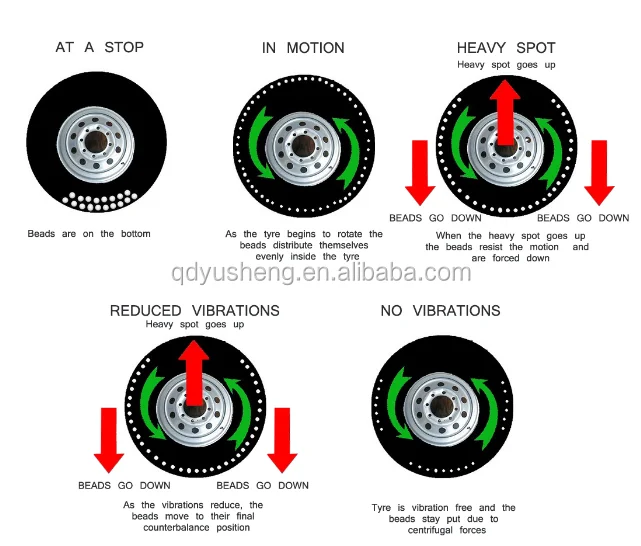 As a result of blows, their edges are crushed, opening the way for the air rushing out. Such damage can be obtained when driving at high speed through pits with vertical edges, places where asphalt is cut, when hitting curbs, and so on. In alloy wheels, with such impacts, the edges do not wrinkle, but break off, or cracks appear through which air will escape. It should be noted here that alloy wheels are much stronger than stamped ones and it is more difficult to damage them. Where the "stamping" will cover the edges, the alloy wheel will remain unharmed, but a lot depends on the rubber - low-profile tires protect the wheel from impacts worse. By the way, the high strength of alloy wheels often leads to serious damage to tires during impacts. Therefore, obstacles must be passed carefully, no matter what wheels your car has.
As a result of blows, their edges are crushed, opening the way for the air rushing out. Such damage can be obtained when driving at high speed through pits with vertical edges, places where asphalt is cut, when hitting curbs, and so on. In alloy wheels, with such impacts, the edges do not wrinkle, but break off, or cracks appear through which air will escape. It should be noted here that alloy wheels are much stronger than stamped ones and it is more difficult to damage them. Where the "stamping" will cover the edges, the alloy wheel will remain unharmed, but a lot depends on the rubber - low-profile tires protect the wheel from impacts worse. By the way, the high strength of alloy wheels often leads to serious damage to tires during impacts. Therefore, obstacles must be passed carefully, no matter what wheels your car has.
How to inflate a wheel without a pump? 5 myths and 2 risky ways
If cracks appear in the alloy wheel, it is better to get rid of it too.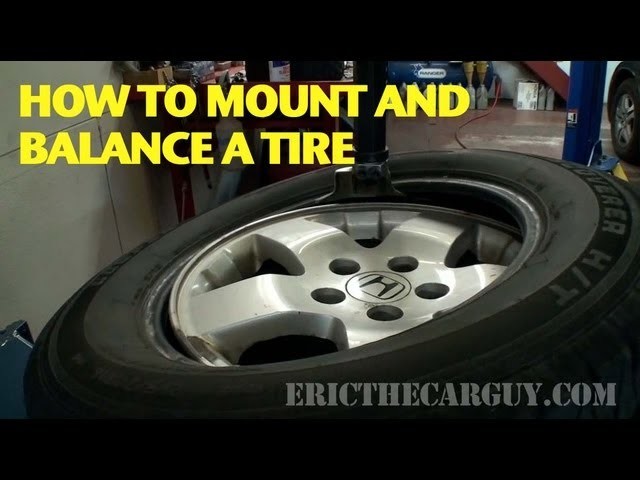 Most likely, you will be offered to weld a crack, but the temperature at which welding takes place will disrupt the structure of the alloy, making it less durable. It is no longer possible to rely entirely on such a disk. It is also useless to build up chips - the integrity of the structure cannot be achieved, which means that the repair should be considered nothing more than cosmetic. Such repairs are justified if you scratched or damaged the front side of the disk on the curb, which you unsuccessfully rubbed on when parking, or on another unnoticed obstacle. If at the same time the spoke was broken, then it is better to hand over the disc to the non-ferrous metal collection point and go in search of a new one.
Most likely, you will be offered to weld a crack, but the temperature at which welding takes place will disrupt the structure of the alloy, making it less durable. It is no longer possible to rely entirely on such a disk. It is also useless to build up chips - the integrity of the structure cannot be achieved, which means that the repair should be considered nothing more than cosmetic. Such repairs are justified if you scratched or damaged the front side of the disk on the curb, which you unsuccessfully rubbed on when parking, or on another unnoticed obstacle. If at the same time the spoke was broken, then it is better to hand over the disc to the non-ferrous metal collection point and go in search of a new one.
A cast wheel, like a stamped one, can also be bought in a single copy. But keep in mind that regular "casting" and Chinese counterparts have significant differences, for example, in terms of weight, which is due to the use of a slightly different alloy. Therefore, the new disc should not only look like the rest, but also be released by the same company.
What happens if you put wheels with a long offset - do you know for sure?
Disc damage is not limited to dents, chips, cracks and warping. Each tubeless rim has a nipple that is easy to damage. This is not only about the spool, which can be tightened or replaced independently in three seconds and three kopecks, but also about the place where the nipple is attached to the disk.
Like new: an inexpensive way to bring back the shine to your rims
More often, winter drifters run the risk of encountering another problem - snow getting into the contact zone of the tire and disk, followed by depressurization of the wheel. When skidding, the tire is deformed with a drift to the side, and at this time a snowdrift collects in front of the wheel going sideways, the snow from which is stuffed into the gap formed. There, the snow thickens and becomes like ice.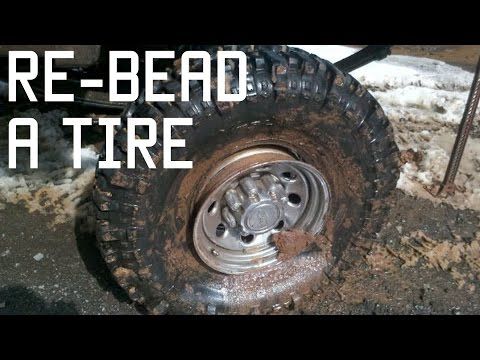 Subsequently, when side slip disappears, dense snow pushes through the rubber and opens the way for air. But this is not a problem of disks or tires, but of the driver.
Subsequently, when side slip disappears, dense snow pushes through the rubber and opens the way for air. But this is not a problem of disks or tires, but of the driver.
Photo: depositphotos.com
A truck tire is a complex technological product with a significant cost. The purchase of tires and their operation require considerable costs, so the choice of rubber must be approached very carefully.
There are 2 types of tires:
Bias tires and radial tires look very similar, but they are very different in design.
The carcass of a Bias Truck Tire is made from a multi-ply cord that acts as the skeleton of the tire. Cord threads of different layers are located at an angle of 35-40° to each other, that is, in a diagonal direction to the circumference of the truck tire.
In radial tires, the cords are tensioned at an angle of 90° to the tire circumference, that is, if you look at the truck tire from the side, the cords are located in the radial direction from the center of the tire circumference.
In addition to the arrangement of cords, there are several other differences:
Each of these types of tires has its own advantages.
1 — Bead ring.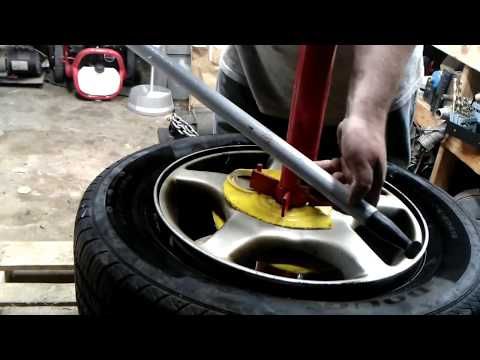 It is the basis of any tire. In combination with the cord plies, it forms the tire carcass. The ring consists of a virtually non-stretch wire core. The bead ring provides reliable fastening of the tire on the rim, fixes its position and provides sealing.
It is the basis of any tire. In combination with the cord plies, it forms the tire carcass. The ring consists of a virtually non-stretch wire core. The bead ring provides reliable fastening of the tire on the rim, fixes its position and provides sealing.
2 - Ply(s) of carcass cord. They perceive all loads: static from the car and cargo, braking, traction and steering forces. Cord layers, interconnected by rubber layers, together with the bead rings form the tire carcass.
3 - Cord lapel. This is the part of the ply that goes under the bead and ends on the sidewall of the tire
4 - Chafer. This is a fabric or steel layer that covers and protects the cord lapel. Its main function is to eliminate wear and friction between the bead and rim of the disc.
5 - Shoulder protector. This is a special triangular rubber layer located in the shoulder area of the tire that evens out the rounded shape of the carcass ply, making the tread area flatter. The undertread absorbs all the forces concentrated on the breaker edges.
The undertread absorbs all the forces concentrated on the breaker edges.
6 — Breaker package (stiffening belt). It consists of several layers of steel cord placed between the carcass and tread of the tire, which encircle the latter along the entire circumference. Adjacent layers of cord in the breaker are located at an intersecting angle to each other.
The breaker provides tire strength, stiffens the tread, protects the carcass from damage, promotes efficient transmission of forces through the tread, and evenly distributes the load on the tire surface.
7 - Protector. This is the outer covering of a profiled rubber tire that is in direct contact with the road. The tread provides the necessary grip on the road surface. It protects the carcass from damage, ensures the operational life of the tire until it is restored.
8 - Undertread. This is the boundary layer of tread rubber between the tire tread and the protective layer of the breaker pack.